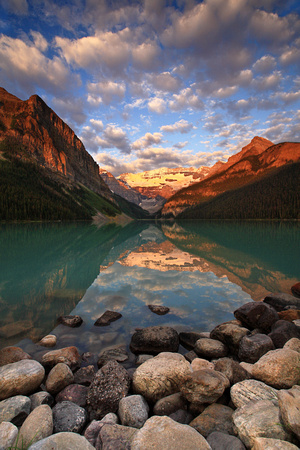
Image: Canon 5D and 17-10 F4 L, Lee 3 Stop soft .09 GND filter, f11 at 17 mm, no crop.
Filters are still required in the digital age of photography, not as much as they where in the film days, but in order to get proper exposure on a lanscape that has a very wide dynamic range or to remove reflections from water, we still resort to using filters.
The main filter system in my bag is the Lee Graduated Nuetral Density filter or GND for short. The main task of these filters is to reduce the amount of light contacting the camera sensor while still being able to use the lens aperture you need. Graduated filters, as the name implies, start the transition from the center of the filter and graduate to the edge in varying degrees, measured in stops.
The main filter system in my bag is the Lee Graduated Nuetral Density filter or GND for short. The main task of these filters is to reduce the amount of light contacting the camera sensor while still being able to use the lens aperture you need. Graduated filters, as the name implies, start the transition from the center of the filter and graduate to the edge in varying degrees, measured in stops.
The top photo is an example of where a GND filter is needed, if a filter was not used and you where to meter on the sky the land would be under exposed or if you metered on the land the sky would have been over exposed, in this image a 3 stop filter was used to even out the overall exposure. The filters I use are made by Lee and Singh-Ray I use the foundation kit with 4 x 6 filters, for wide angle I use there special wide angle hood with one filter slot. I carry a 1, 2 and 3 stop GND a 3 stop reverse GND and an 8 stop variable ND. The reverse filter is for shots like a sunset or sunrise where the brightest part of the image is closer to the middle of the image. The variable ND is a great filter for shooting seascapes, this is a filter that I will talk about in another blog.
The Lee Big Stopper a 10 stop ND filter for maximizing the effect.
The Lee Big Stopper a 10 stop ND filter for maximizing the effect.
Circular Polarizer: The CPL is another filter that is still required for reducing reflections and a good quality filter should be used to prevent color cast's. B + W is my choice, I use the slim 77mm and reducing rings when needed. These filters also increase the color saturation of trees and blue sky's and add contrast to clouds, there should be one in every photographers bag. A word of caution on CPL and wide angle landscapes, if you have a lot of blue sky the CPL will only cover part of the sky and you will end up with un-even polarization that will ruin your image.
For more filter information see Variable Neutral Density Filters here
For more filter information see Variable Neutral Density Filters here


